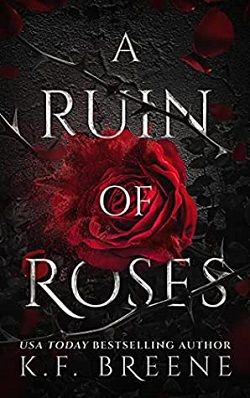There were two cars and three pickup trucks, all showing various amounts of body damage, all with their windshields either shattered or completely blown inward.
Almost exactly in the middle of the vehicles, where clearly another vehicle had been parked before forcibly being removed-Becca’s Mercedes, Matt thought-there was a white Ford panel van backed up to the scene, doors open. A blue and gold stripe ran the length of the vehicle, with a representation of a police department shield on the door and, to the right of the driver’s window, MEDICAL EXAMINER in blue block lettering.
Harris saw Payne looking at that and gave him an overview of what he’d seen that morning, including the rescuers pulling the girl from the Mercedes and the white male who had run out from the burning room.
“It looks like a bomb went off, Tony,” Matt said as they walked up to the room with the missing window.
“May as well have been. Pretty much the same result,” Harris said as they looked inside.
Javier Iglesia stood in the middle of the room. His hands gripped the tubular frame at the end of a heavy-duty gurney, on top of which was strapped one of the black body bags. The other bag was gone, already loaded into the back of the medical examiner’s panel van. The photographer was in the van’s front passenger seat, downloading the digital files of her photographs onto a notebook computer hard drive and packing up her camera gear. Both the bodies and the images were going to the morgue, where Dr. Mitchell, or one of the medical examiner’s assistants, would perform the autopsies and review the crime-scene photos.
Harris and Payne’s appearance in the window caught Iglesia’s attention.
“Hey, Detective Payne! How the hell are you? Shot any bad guys lately?”
Payne grinned and shook his head. “Not in the last couple hours, Javier. But keep it up and I might have to use you for practice.”
Iglesia laughed appreciatively as he started pushing the gurney toward the blown-out door.
“Glad to see you back,” Iglesia said. “The cops need a classy guy like you, is what they need-”
“This isn’t my job, Javier. But thanks.”
“-and, as I was telling Detective Harris here, we damn sure need someone like you to put a bullet in these godless pendejos.”
Iglesia either let pass or did not hear what Payne had said. Instead, he loath ingly slapped at the body bag with the back of his left hand, then pushed the gurney through the door.
“Hold up a minute, Javier,” Harris said as he walked to meet him at the back of the Ford van. “Show Matt the bag, would you?”
“Are those the new-style ones?” Payne said.
Iglesia smirked and nodded. “You know about them?” he said.
He then reached down and tugged at the foot of the bag until it turned enough to reveal the manufacturer’s tag. It was imprinted in a white rectangle designed to resemble a cadaver’s identification toe tag.
Payne leaned forward and read it:
Remains Recovery Unit
SIZE ADULT X–LARGE-MAX TESTED CAPACITY 700 LBS. MFG BY 2 DIE 4 INC., PHILA., PA.
Then he smirked, too. “Clever company, all right. I’d heard these were coming. A retired Philly detective came up with the idea, right?”
“Yeah,” Iglesia said. “Don’t know what he got paid for the patent, or maybe he’s got a piece of the company. But at forty, fifty bucks a pop, someone’s making a mint. Every agency with any budget is stockpiling the biohaz version, with the feds buying semitrailers full ?
??just in case.’ ”
He tugged at the bag and with some professional pride added: “These really are better than the old ones, in every way. The old ones, they had zippers, and those could get really messy.”
Payne understood what he meant. The zippers allowed for the risk of contamination of the evidence, or for the viewer possibly to be exposed to any biological or chemical hazard that may be part of the remains, or both.
Not so with the new design. The bag-made of heavy-duty vinyl, oval-shaped and ringed with padded loops that doubled as lifting points and tie-down points-had two unheard-of features that made it unique and, more important, preserved the chain of custody.
The first was that the top of the bag had a black flap running its length that, when folded back, revealed a clear vinyl viewing panel. One could examine the bag’s contents without having to open the bag, which was important, as there was no zipper on the bag.
And that pointed to the bag’s second main feature: a chemically sealed main flap. Once the remains went into the bag and the clear panel was closed, a chemical reaction occurred as the seams touched, heat-sealing them securely closed. If someone opened the bag, it could not be resealed. A new bag, with a new, unique serial number, was required. And, as an added bonus, no zippers also meant no zipper teeth for bodily and other fluids to seep out through.
Harris pulled back the solid black panel, uncovering the clear vinyl viewing one.















